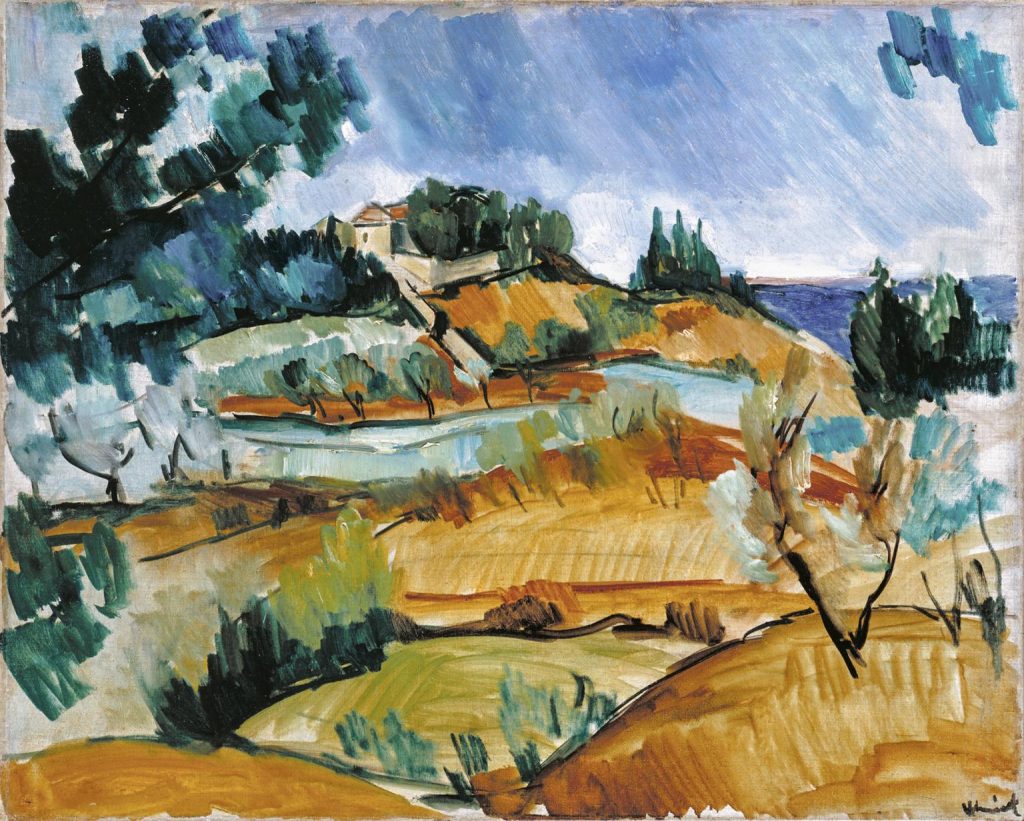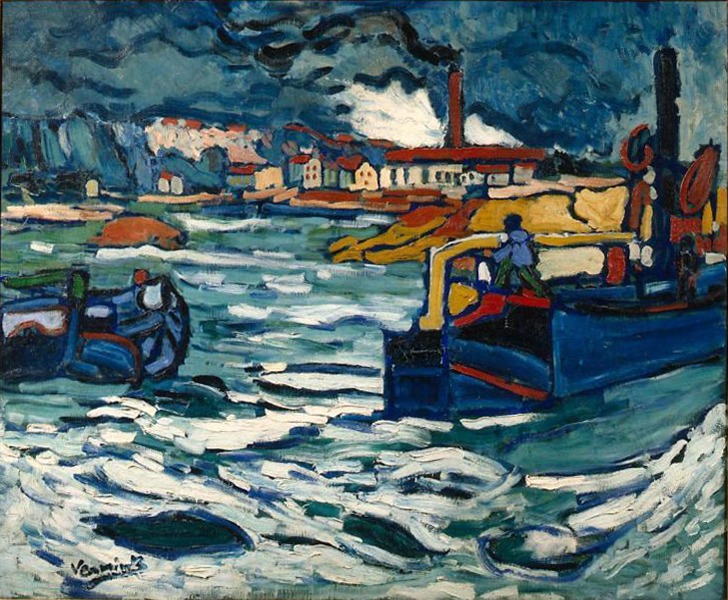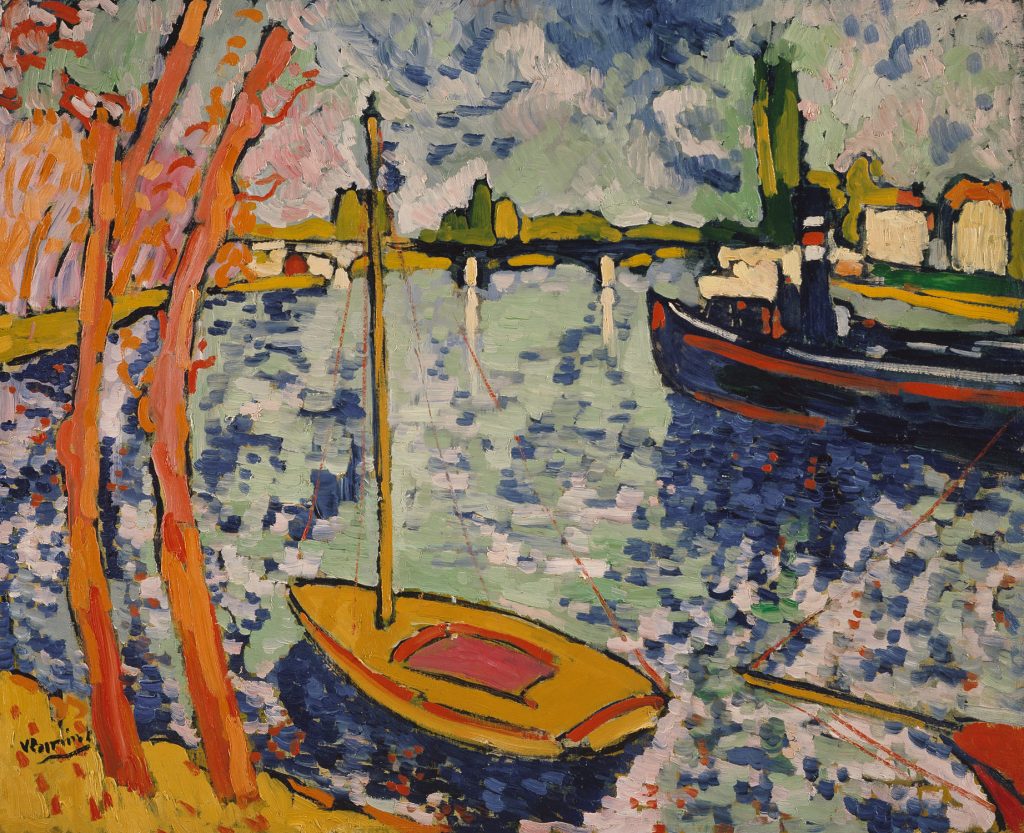Maurice de Vlaminck was born in Paris in 1876 to a pair of music teachers. Vlaminck learned violin from his father early in life and had many artistic interests, including poetry and (gasp!) writing light pornographic stories. In Vlaminck’s early twenties, he met another aspiring French artist, André Derain, and shortly after time serving in the first world war; the two got a studio together. Vlaminck would paint all day long, retreating in the evenings to teach violin and play in bands.

Maurice de Vlaminck participated in the famous exhibition, the Salon d’Automne, alongside the likes of Matisse, where together the painters involved were labeled “Fauves,” meaning wild beasts by renowned art critic Louis Vauxcelles. Suffice it to say, Louis did not appreciate the hallmarks of Vlaminck and his colleague’s style; unnatural and vibrant colors used to express emotion rather than to represent reality.

Ironically, Vlaminck himself became a critic of the Cubist style some years later. He was irritated that Cusism slowly became more popular than the style Vlaminck himself painted in. Maurice de Vlaminck disliked the work of Pablo Picasso so fiercely that he’s quoted as blaming Picasso for “…dragging French painting into a wretched dead end and state of confusion”.

I don’t blame Vlaminck. For most of history, particular art styles were popular for at least a few hundred years. By the industrial revolution, however, what was popular seemed to come and go so quickly. It must have been disorienting for artists at the time. The philosophy of painting to express emotions instead of reality, something foundational to the fauvism style, is a bit at odds with Cubism. Vlaminck’s heroes were Van Gogh and Cézanne, masters of emotional painting styles in their own right. It’s no wonder he felt so strongly about Picasso’s work when public attention turned to the distorted geometric shapes of Cubism.



November 28, 2021 at 9:51 pm
Chris,
As per usual your blog posts are excellent! You have a way with words and seem to get inside the artist you are covering in an effortless manner. I also very much appreciate all of your interesting anecdotes, especially his opinion about Picasso and Cubism. Really interesting and entertaining.
The same can be said about your PK presentation on Raphael. That was a great presentation and, dare I say, performance, with solid information, great slides, and personal thoughts about the artist and his time. I’m giving you a 10/10 for the PK and a 2/2 for your latest post. Well Done!
Jeff